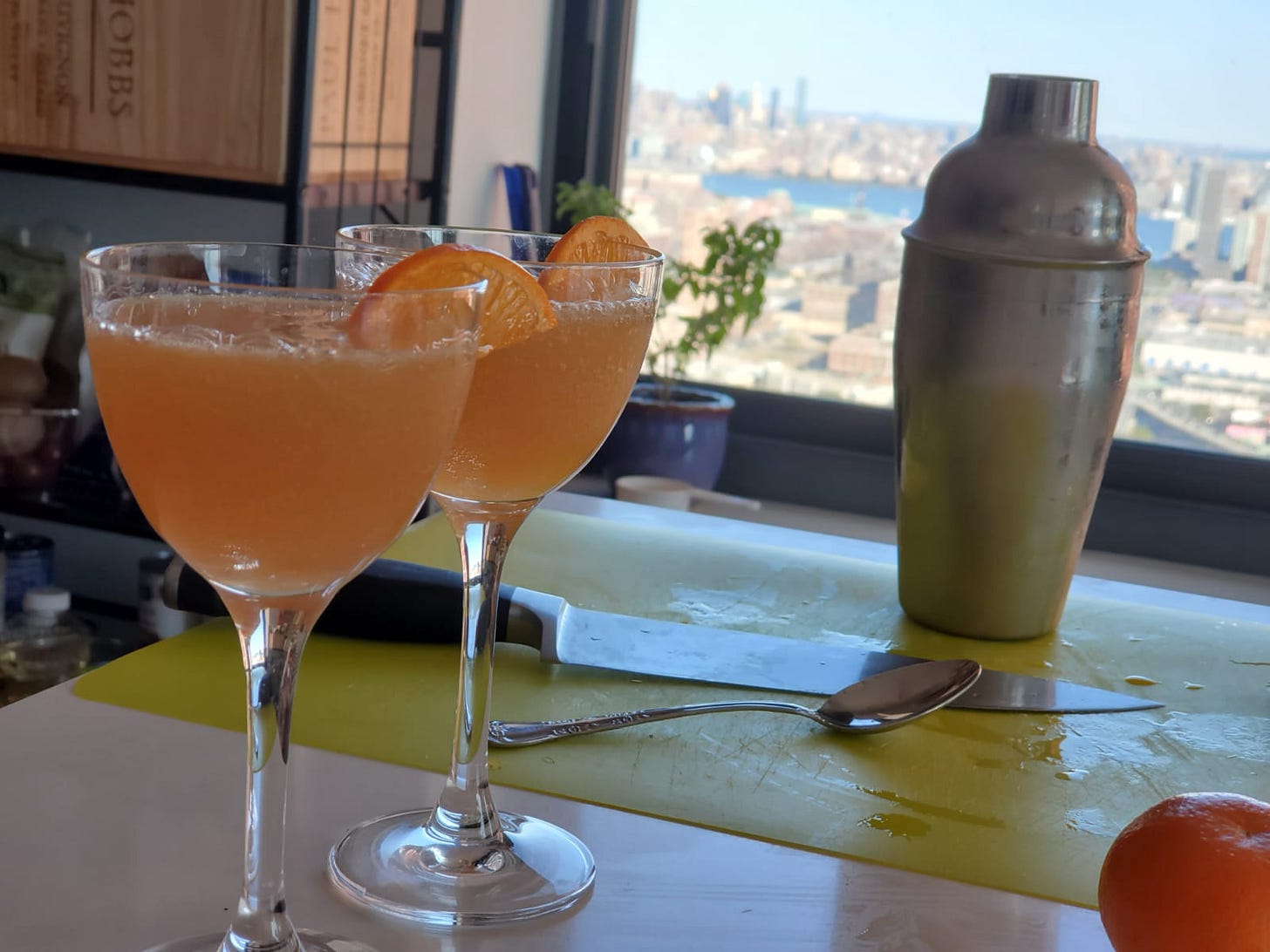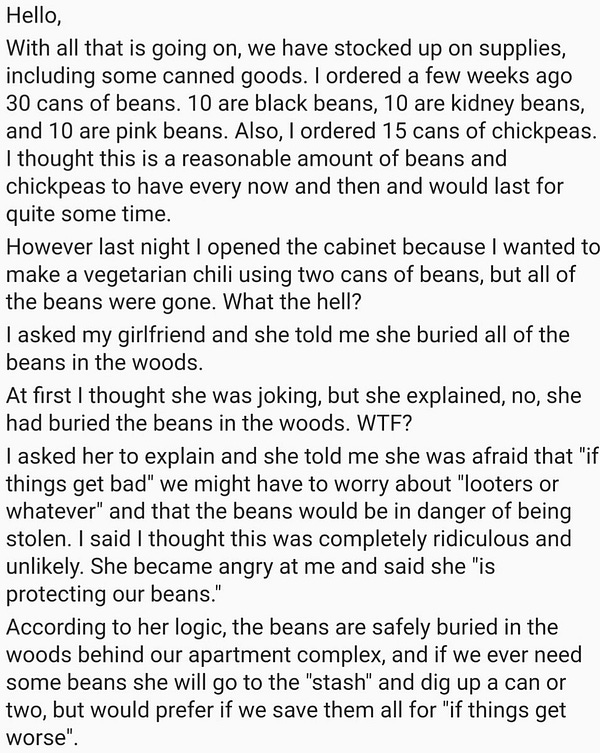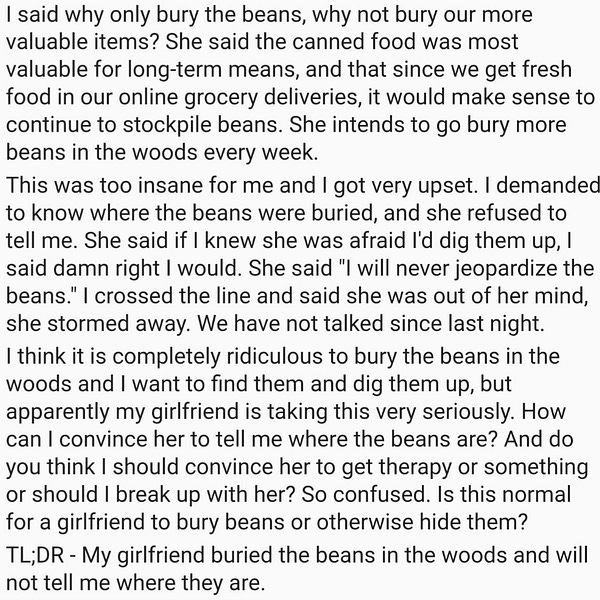In this week’s edition, Jackie explores our byzantine food distribution system and why so much fresh food is going to waste. You’re doing a great job in quarantine and following social distancing rules. You deserve a drink for this week’s recipe!
If someone shared this newsletter with you, subscribe below.

Waste is built into every step of the U.S. food system, from field to warehouse to grocery shelf to refrigerator. But because of the coronavirus crisis, that waste is piling even higher, and it’s becoming difficult to ignore. It’s painful to see images of miles-long lines of people waiting outside of food pantries juxtaposed with mountains of ripe produce being plowed under in the fields. The current implosion of distribution channels has got me thinking about how we might make our food system more efficient, sustainable, and equitable moving forward.


As both a farmer and a systems and infrastructure nerd, my friend Mike Meier helped me sort through how and why food is left in the fields while many people go hungry. “It’s not a failure of our farming. The fact is, the food is being produced. The failure is in the distribution infrastructure. That’s why the milk is being dumped and the tomatoes are being plowed under. There’s a failure in the ability for that produce to move from the farm to a person’s mouth.”
Much of that failure can be attributed to the sheer scale of the system. While small, local operations can find creative ways to quickly pivot, that’s not an option for the industrial farmers, trucking companies, retailers, and other businesses that operate within the convoluted global behemoth of food distribution. Mike described it well: “It’s a byzantine system. On so many levels, from the business side, to the government side, to international trade policy.”
Farmers across the country are trying their best to save their crop from ruin, but it can be near impossible to circumvent the rigid and fragile realities of the current distribution system.
Ryan Cranney, an Idaho potato grower, was interviewed for a recent Politico story on our current food waste/distribution crisis. Not sure what to do with the roughly 60,000 pounds of spuds in his fields, he simply piled up his excess crop in his front yard and told people to come and take what they wanted. It’s understandable that he’d have trouble finding a new buyer on the fly for such a massive quantity of produce.


Cranney thinks our complete cluelessness over where our food comes from makes matters worse. “If we as a country have more understanding of our food chain and where our food comes from and really what that means to farmers and the distribution system, maybe we’ll be able to change things where we’re not quite as vulnerable going forward.”
What does a less vulnerable food system look like? I agree with Cranney that a great first step is for all of us to start paying more attention. I think of it as my civic duty to ask where the tomatoes in my salad came from, or requesting the local fishmonger stock locally caught fish. We have to be willing to have the conversation. By ignoring the systems that put food on our tables, we’ve created a monster — one that is currently Godzillaing its way through Florida’s produce fields. The more we can learn about and engage with our food — from growing to distribution — the more agency we’ll have to reshape a more resilient system.
love,
Jackie
Happy May Day! Yes at the end of this week we’ll have made it to May.
On Friday, workers at Whole Foods, Amazon, Target, and Instacart are striking to protest lack of health protections from employers in the face of the crisis. Tell your friends so they don’t cross the picket line. (And tell them about this newsletter.)

Talks + Workshops
Jackie dishes on sourdough discard
I’ve got another awesome virtual food education event on my calendar. At 12 p.m. EST on Saturday I’ll be presenting a demo on my Instagram all about sourdough discard for the Preserving Abundance Virtual Food Waste and Ferment Fest
Organized by Root Kitchens in Atlanta, the festival is happening all day long on Saturday via Instagram Live. To participate, just head to the presenter’s Instagram profile and watch their demo live. Easy peasy.
For my talk, we’ll cover some of my favorite uses for discard, including how to make sour flour for use in pastry and pasta. We'll also learn how to adapt your favorite cake, cookie, and flatbread recipes to incorporate sourdough. Check out the entire incredible schedule here. I for one plan to be glued to the screen for the duration.
Fresh Links
🍥Covid-19: The Food Waste Dimension | The Food Programme
Clearly we’ve got food waste on the brain this week! Here’s a story that celebrates some of the creative ways that people are combating food waste and supporting small farmers during the crisis.
This podcast episode highlights a few fun events, including Slow Food’s World Disco Soup Day, a global event where folks get together to make soup from food scraps and also have a big dance party (check out the excellent foodie playlist on Spotify). There’s also the upcoming British Cheese Weekender from May 8-10, a full weekend of virtual cheese education and tastings, organized in support of Britain’s artisan cheese makers.
An organizer for World Disco Soup Day hopes we might use this difficult moment to rethink food waste: “[I]n some ways the COVID-19 crisis might also present an opportunity. This is a time for people to slow down and to think about what’s really important. It’s also a time when we’ve been forced to realize that we are vulnerable and that this vulnerability will only become more relevant down the line.”
🖌️Keeping America fed: six workers on life in the thick of the coronavirus crisis | The Guardian
Writer and artist Susie Cagle spoke to essential workers about life on the frontline and expressed their thoughts in graceful single-panel comics. Hear what meat cutters, truck loaders, farmworkers and cashiers have to say, in their own words:


💭My Restaurant Was My Life for 20 Years. Does the World Need It Anymore? | NY Times Magazine
The viral (should we still say that word?) food story of the week was this first-person retrospective on the shuttering of a beloved New York City restaurant. Gabrielle Hamilton, the owner of Prune, reflects on what’s happened to the restaurant industry and what it will look like after the pandemic has passed.
Most importantly she says, a collapse of the restaurant industry has felt imminent for years due to rising costs. Owners and their staff barely make enough to get by, and so, “coronavirus did not suddenly shine light on an unknown fragility. We’ve all known, and for a rather long time.” Hamilton says:
There used to be enough extra money every year that I could close for 10 days in July to repaint and retile and rewire, but it has become increasingly impossible to leave even a few days of revenue on the table or to justify the expense of hiring a professional cleaning service for this deep clean that I am perfectly capable of doing myself, so I stayed late and did it after service. The sludge of egg yolk seeped through the coverall, through my clothes to my skin, matted my hair and speckled my goggles as my shock registered: It has always been hard, but when did it get this hard?
If independent restaurants are to come back from covid-19, the industry will need a major restructuring. Hamilton’s piece spotlights how running a restaurant in a big city has changed over the past two decades.
(You can also listen to this article. There’s a “play” button right at the top of the story. A shoutout for emailing us this story to Grandma Carol, who tried but never could get a reservation at Prune)

Classic Sour Cocktail

Above: a mandarin daiquiri
📝Guest recipe: Sommelier and former Floridian Steven Washuta
Right before New York City shut down, I worked as wine director of an Italian restaurant in Manhattan. Right after New York City shut down, I lost my sense of smell and taste, which is a minor symptom of coronavirus, but also a fairly frustrating one for a somm. I spent three weeks without two of my five senses, and once they returned it was time to experiment with the best drinks to enjoy in quarantine.
A great, basic cocktail to throw together with limited supplies in quarantine is the sour. A sour is a general term for a cocktail with three ingredients: spirit, sweet — usually simple syrup or triple sec, and sour — typically citrus. The sour concept is the basis of many popular drinks like the margarita and the daiquiri .
The sour recipe I like best uses 2 oz of booze and 1/2 to 3/4 oz of the sweet syrup and the citrus. Then, shake the living hell out of everything.
Ingredients
2 oz of liquor of choice
1/2 oz of citrus of choice (see directions for fave booze and citrus pairings)
1/2 oz of simple syrup
step-by-step
To make a simple syrup, add 1 cup of sugar and 1 cup of water to a pot and heat on the stove until sugar is dissolved, stirring regularly. The mixture doesn't need to boil.
Choose your booze, and citrus. If I’m drinking gin or rum, I typically like to use lime for my citrus. If I’m drinking whiskey, I go with lemon. With vodka, use lime and add a splash of cranberry for a cosmo. For a luxury whiskey sour, add an egg white.
Don’t obsess too much about the right amount of citrus. A half of a lemon or lime is usually about right for one drink. Also don't worry about lemon seeds as they'll be strained out. Adjust the sugar to taste; I typically prefer 1/2 oz of sugar, which emphasizes the sourness a bit more.
How to shake:
If you own a stainless steel cocktail shaker simply add all ingredients and 3-4 large ice cubes to the shaker. If you don't have a shaker use a Thermos or Nalgene or anything watertight that ice cubes can fit inside.
Make sure the shaker or bottle is very well sealed and then shake back and forth violently for 20-30 seconds. Strain through any fine mesh strainer into the glass. Most sour drinks are served up — in a glass without ice, but a margarita is typically served over ice. Garnish with a peel or slice of citrus and stare at the cat.
Direct any wine-related dilemmas to stevenwashuta@gmail.com. Follow him on Instagram @swashuta.
Below: A cosmopolitan


There’s a forum on Reddit where people can ask for relationship advice. This here is the defining story of our troubled times. You won’t regret reading it:



Moral of the story: Never jeopardize the beans.
Talk to Us
Send in your comments, mailbag questions, recipe mishaps, or cooking tips: sunshineandmicrobes@gmail.com. Also do us a favor and follow us on Facebook and Instagram. Visit our website and cook yourself something nice.
If you enjoyed this email, please share it with others. If someone forwarded this to you, click the button to sign up:
-------------------------------------------------------------------------------------------------
Sunshine + Microbes team
Jackie Vitale is the current Chef-in-Residence at the Robert Rauschenberg Foundation. and co-founder of the Florida Ferment Fest. Her newsletter explores the intersection of food, culture, environment and community.
Matt Levin is a freelance reporter based in Colombia. He edits Sunshine + Microbes and contributes other scraps to each issue.



